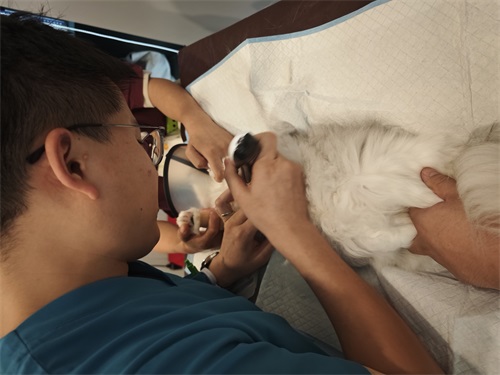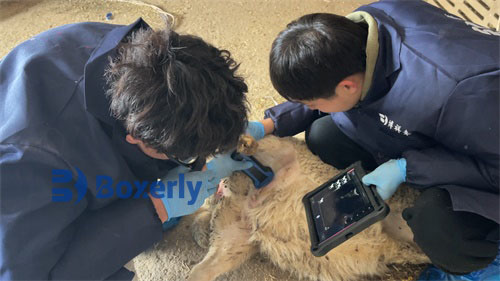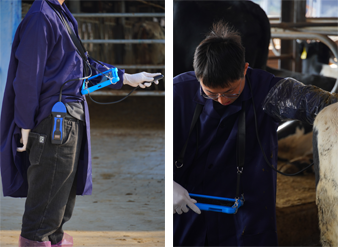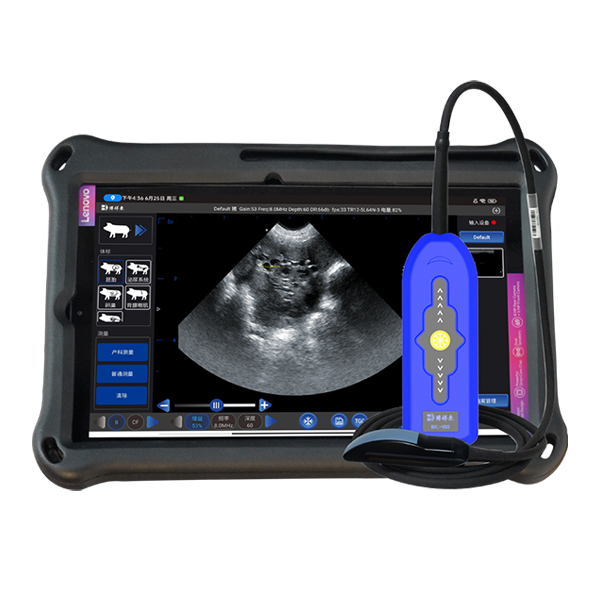Buying a Veterinary ultrasound machine is a significant investment for any veterinary clinic or farm. New machines can be expensive, which makes used or refurbished ultrasound devices an attractive option. But before purchasing a used vet ultrasound, it’s important to understand the advantages, risks, and practical considerations. Let’s take a closer look at what you should know.

Why Consider a Used Vet Ultrasound?
Used veterinary ultrasound machines are appealing primarily because of cost savings. A new full-featured ultrasound system can cost thousands of dollars, sometimes tens of thousands for advanced Doppler systems. A pre-owned unit can provide similar functionality at a fraction of the price.
Besides saving money, used machines can be a practical solution for small veterinary practices or mobile veterinarians who need portability without breaking their budget. Many reputable manufacturers also offer certified refurbished units that have been tested and calibrated to meet original specifications. This ensures the machine works reliably while costing significantly less than new equipment.
Key Factors to Evaluate Before Buying
Before buying a used ultrasound, it’s important to assess several factors to ensure the investment is worthwhile. First, check the probe condition. Probes are delicate, and any cracks, damaged cables, or worn connectors can affect image quality or even render the probe unusable.
Second, evaluate the software version and features. Some older machines may not support advanced functions like color Doppler or 3D imaging, which are critical for certain diagnostic tasks. Make sure the device can handle the types of scans you perform most often, whether that’s pregnancy checks, abdominal imaging, or cardiac scans.
Here’s a simple comparison of factors to check when buying a used vet ultrasound:
| Factor | What to Check | Impact |
|---|---|---|
| Probe Condition | Look for cracks, worn connectors, cable damage | Affects image quality and device usability |
| Software & Features | Ensure compatibility with your needs | Missing features may limit diagnostics |
| Machine Calibration | Check calibration records or request testing | Improper calibration can lead to inaccurate results |
| Warranty or Support | See if the seller provides service options | Helps reduce risk of unexpected repair costs |
Benefits of Buying Used
One of the biggest benefits of buying a used veterinary ultrasound is immediate cost savings. Clinics with tight budgets can acquire high-quality equipment that may otherwise be unaffordable. This allows veterinarians to expand their diagnostic capabilities and offer more advanced services to clients.
Another advantage is familiarity. Many used machines come from similar practices, which means they may already have settings optimized for common animal scans. For someone learning or upgrading from an older model, this can reduce the learning curve. Finally, used units often come with sturdy designs. Veterinary ultrasounds are built to endure heavy use on animals, and a well-maintained used machine can last many years.

Risks and Precautions
Despite the benefits, buying a used ultrasound comes with risks. Image quality may be lower if the probe or machine has experienced heavy use. Calibration may be outdated, leading to inaccurate measurements. Electrical components may have degraded, increasing the chance of malfunction.
It is also critical to verify the seller’s reputation. Reputable sellers will provide maintenance records, testing certifications, and sometimes a limited warranty. Avoid purchasing from unknown sources, especially online marketplaces without clear return policies.
Tips for Making a Smart Purchase
Test Before Buying: If possible, see the machine in action. Run scans on sample tissue or objects to confirm image clarity.
Ask About Maintenance History: Check for regular calibration and any repairs.
Verify Accessories: Make sure probes, chargers, and software updates are included.
Consider Upgrades: Some used machines can be upgraded with newer software or additional probes, which can increase functionality.
Conclusion
Used veterinary ultrasound machines offer a cost-effective way to expand diagnostic capabilities. They can be particularly useful for small clinics, mobile veterinarians, or farms with limited budgets. However, careful evaluation is essential to avoid potential pitfalls. Inspect the probe, check software features, verify calibration, and choose a reputable seller. With the right precautions, a used vet ultrasound can provide reliable service for many years, helping veterinarians improve animal care without excessive expense.
link: https://www.bxlimage.com/nw/1290.html
tags: Used Vet Ultrasound Machine








